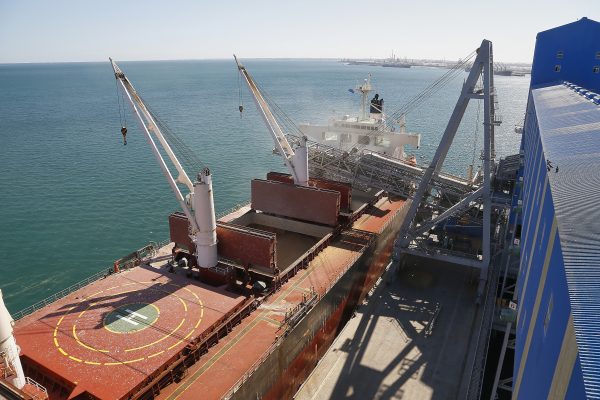Australia’s biggest grain export and co-operative business, CBH Group, has ruled out a share market listing, saying the majority of members wanted to keep its co-operative structure.
In February 2016 CBH’s board received a proposal from Australian Grains Champion to take control of all of the issued share capital of the co-op – but chair Wally Newman said the board rejected this because “it did not represent value for Western Australian grain growers”.
A survey by CBH found the decision was supported by 78% of its members.
“The proposal highlighted what we’ve been well aware of and working on for a number of years now – that as CBH grows and external forces change, we need to continually adapt so we can do it smarter and be best placed to face challenges and capture future opportunities,” said Mr Newman.
He confirmed the co-op would be exploring different ways to enhance its existing non-distributing co-operative structure, particularly in regards to how it returns value its growers.

CBH, which dates back to 1933 and is owned by 4,100 grain grower businesses, has launched a network strategy and investment into oat processing in Western Australia.
“The strategy underpins a A$750m investment CBH will make in the storage and handling network over a five-year period, ensuring the network operates as efficiently as possible for the benefit of our growers,” said Mr Newman.
“During 2016 we demonstrated our dedication to growth along the supply chain with the announcement of a new oat processing facility in Western Australia and continued to support our local communities through A$1.8m of funding through sponsorships and grants.
“We also conducted an in-depth review of CBH’s structure and governance, which was a wonderful opportunity to engage with our members and hear their preferences about the future of CBH, with almost eight out of ten members wanting CBH to remain a co-operative.”
CBH’s annual report showed a pre-rebate surplus of A$110.2m for the year 2015/2016, up 10.6% year-on-year, with growers delivering 13.6m tonnes into the CBH network in 2016.
The co-op paid a record total of A$62.7m in dividends to its grower members, up from A$16.9m in the previous year. These higher payments were reflected in CBH’s net profit after tax, which was A$49.8m in 2015/2016, down from A$82.7m in 2014/2015.

CBH chair Dr Andrew Crane said the pre-rebate surplus result was a positive outcome.
“It’s important to note that we were able to provide $62.7m of rebates to growers from the 2015-16 financial year, which is a pleasing result,” Dr Crane said.
“Our marketing and trading division also performed well despite a challenging global trading environment; it was able to provide growers a $1.20 per tonne rebate for tonnes sold to the co-operative, which forms part of the total $4.20 rebate.
“Another initiative we have put in place over the past year is to further drive the efficiency of our business. We have been able to achieve recurrent annual savings of A$16m across the business and we will look to further reduce costs by AUD $10m over the coming year.”
The co-op also saw falling returns on its investments, such as its 50% ownership of global flour business Interflour, for which CBH’s share of profit was A$300,000 against A$8.4m in 2015.
“It’s been a tough year for Interflour, our Asian flour milling operation. Despite such challenges, it has still been able to grow and diversify,” Dr Crane said. “We’re looking forward to the opening of the InterMalt malting facility in Vietnam in 2017 as well as completion of a new flour mill in the Philippines.”
Throughout the year CBH provided more than A$1.8m to local communities. The Group has also spent A$132.4m on capital projects and maintenance across the network.
“CBH is a strong and successful grower owned co-operative. Growers are owners, users and sole beneficiaries of the business. This report showed how any value created, be it from a run of large harvests or trading or investments, is retained for the benefit of, or returned to, the Western Australian grain grower,” added Dr Crane.